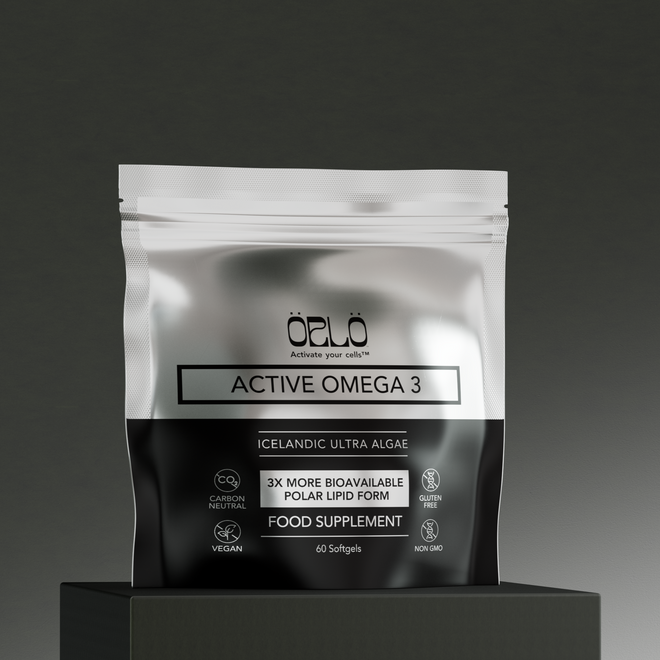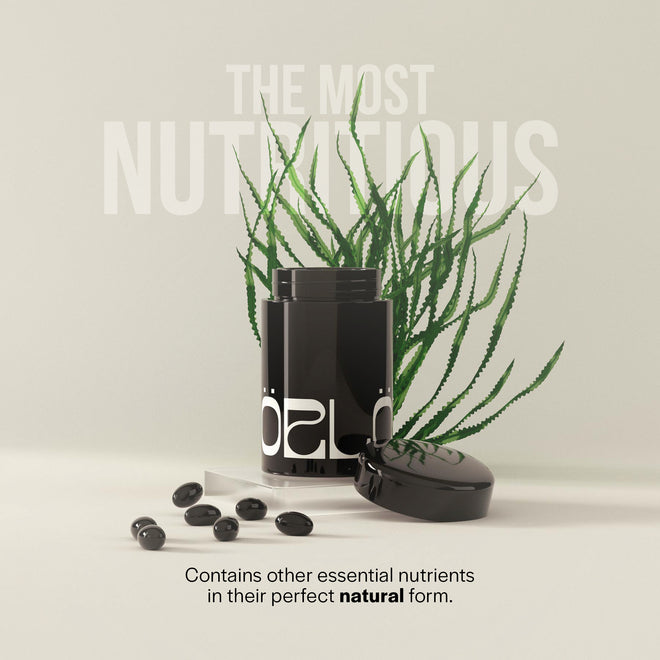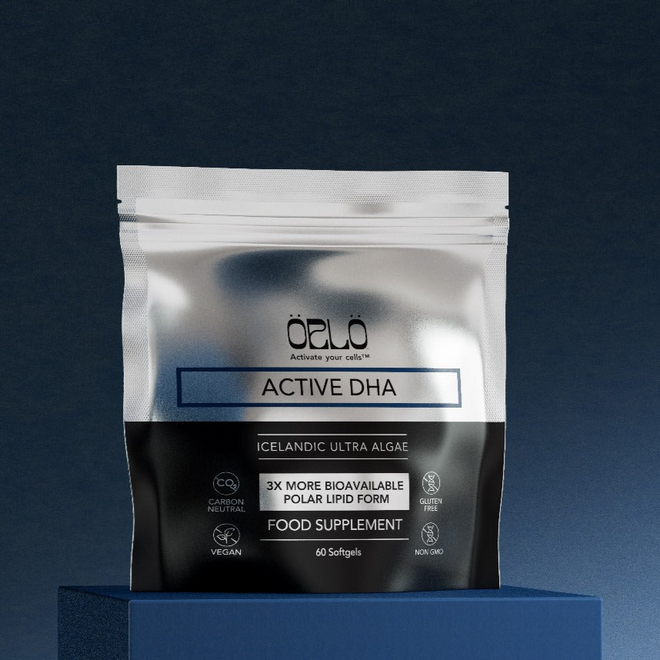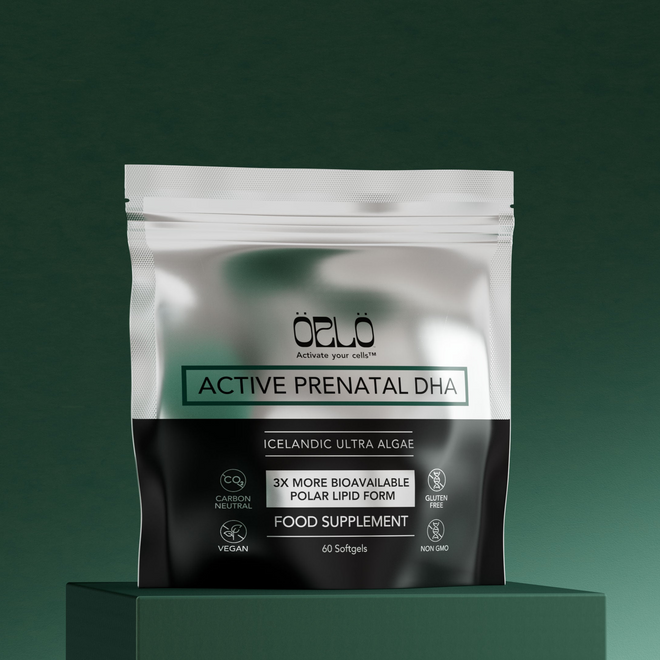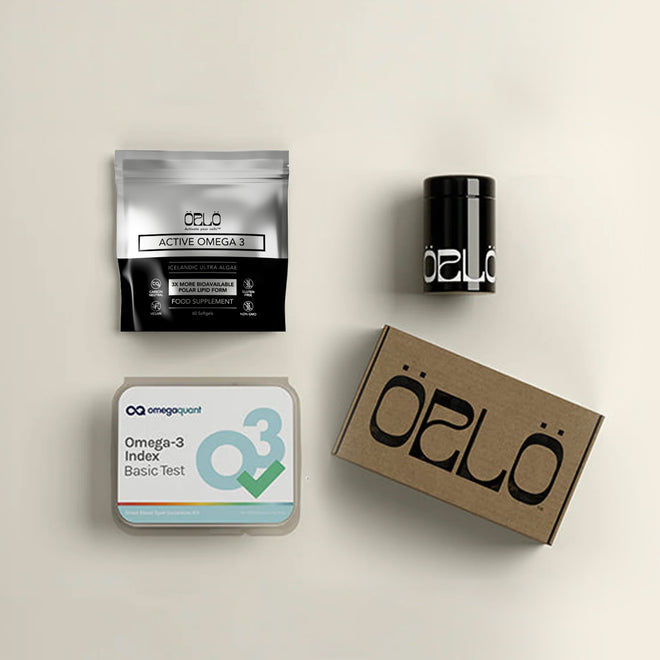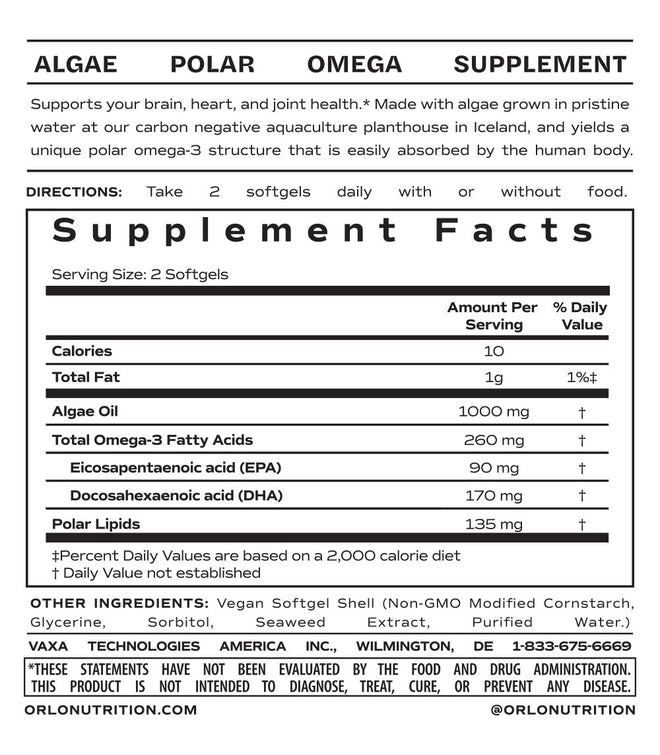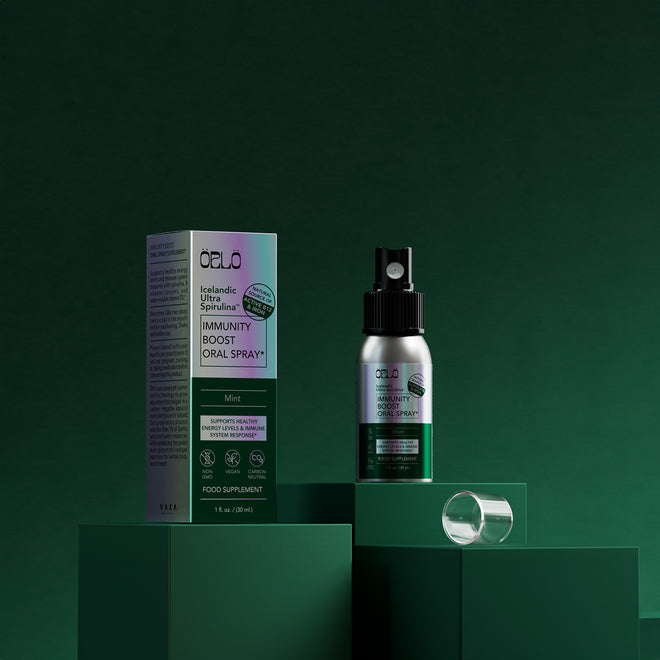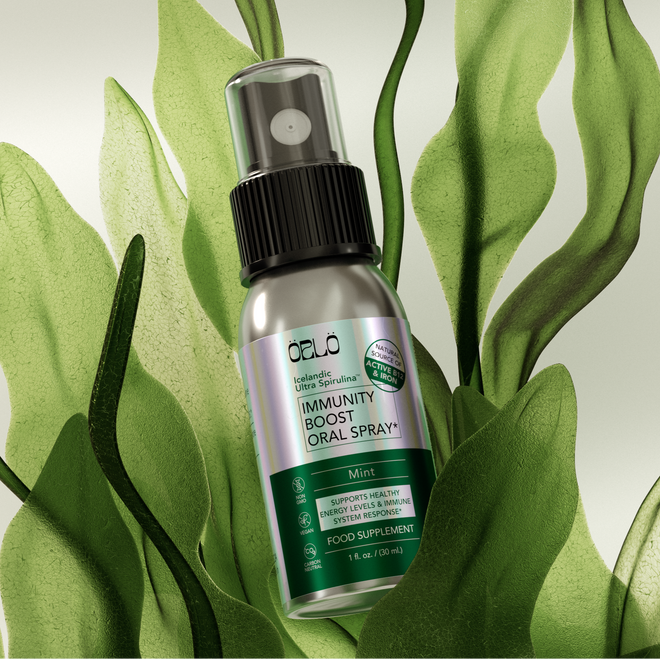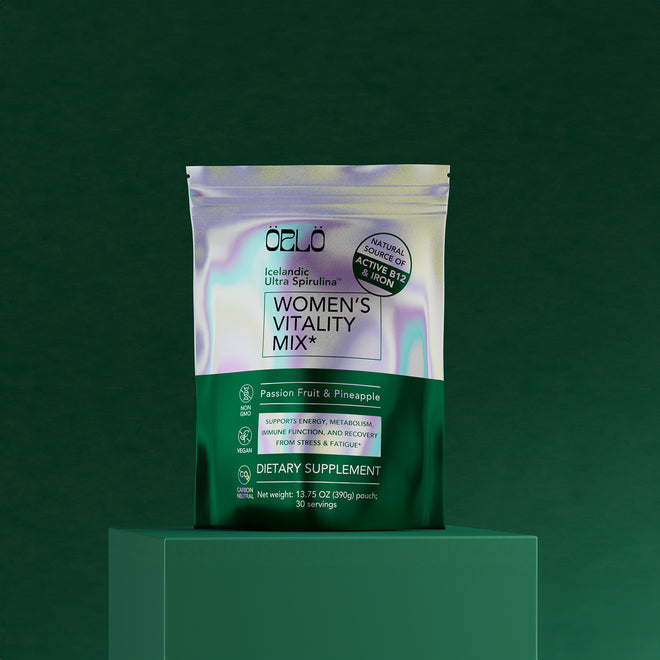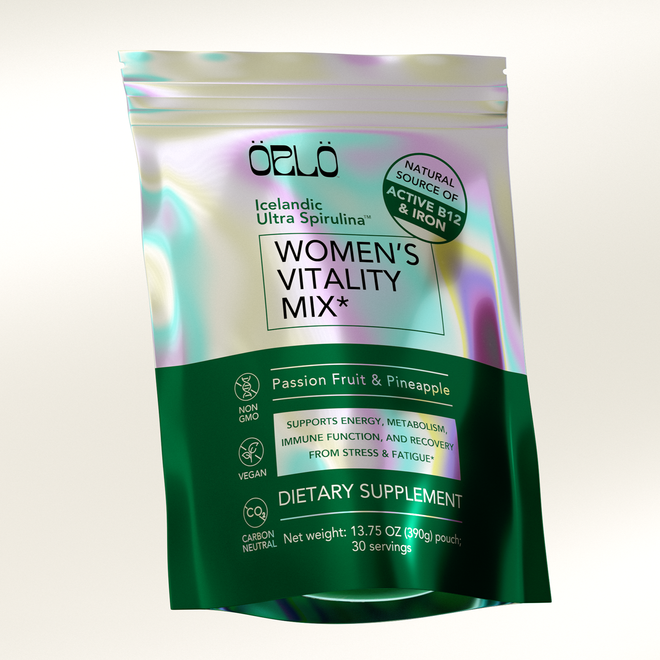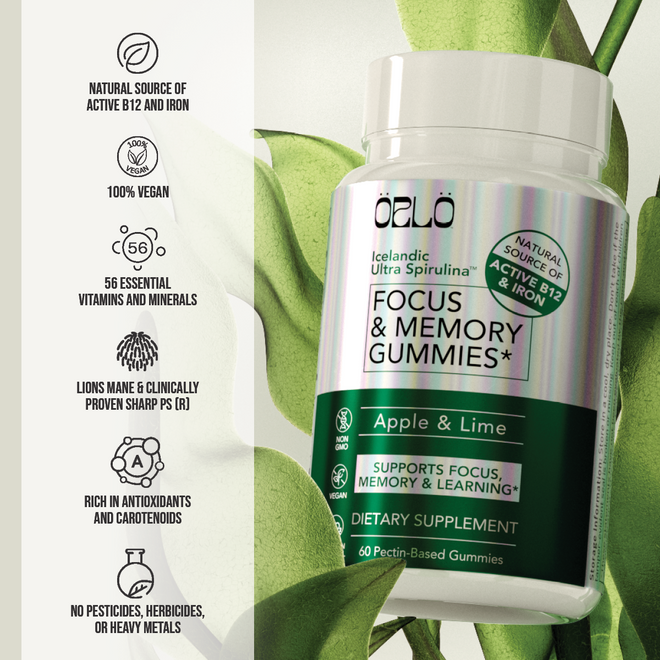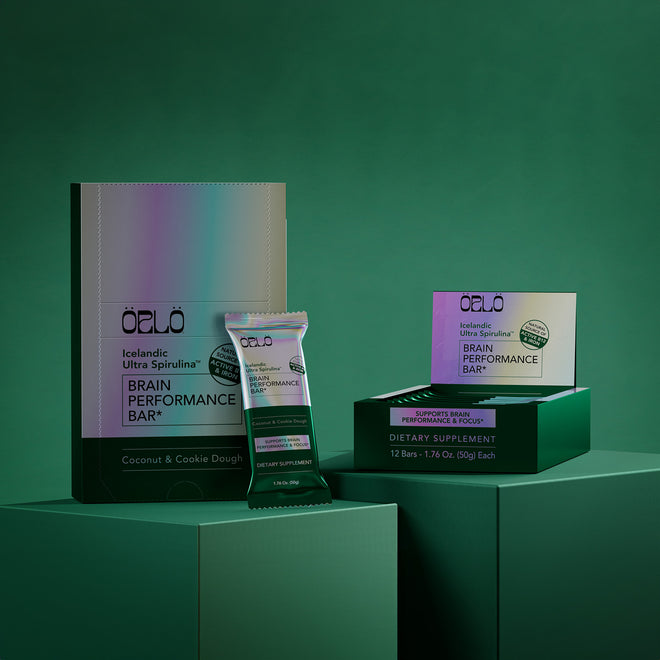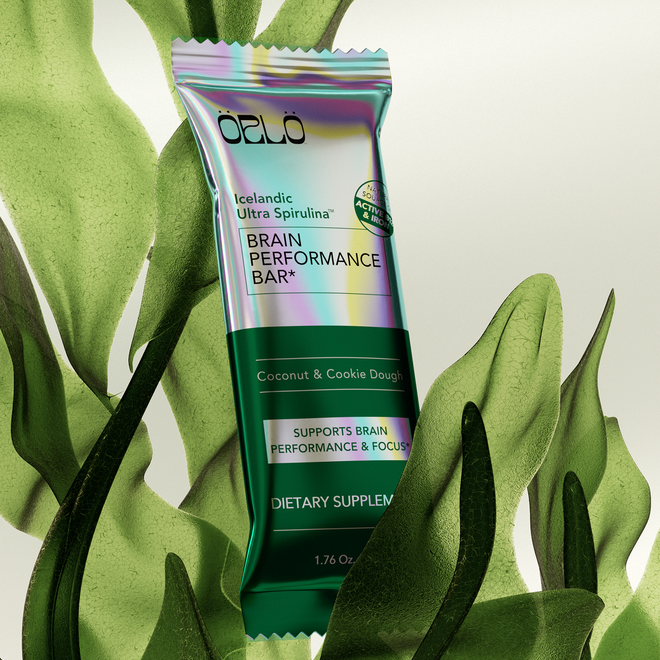25% Off - use code: HOLIDAYS
Regenerative Agriculture: Mitigating Climate Change And Yielding Quality Produce With Caryl Levine And Ken Lee
Watch the episode here
Every culture has a different use of rice and how to grow it. Some farm practices harm our environment by damaging the soil through massive disturbances. In this episode, Caryl Levine and Ken Lee, Authors of Rice Is Life and Co-founders and Co-CEOs of Lotus Foods, explain that the future of food lies in the practice of regenerative agriculture. Minimizing the physical disturbance of soil keeps a huge amount of carbon dioxide from releasing into the atmosphere. This practice of building organic matter on the soil not only helps mitigate climate change effects but also creates a resilient environment where plants thrive, resulting in more productive yields. Tune in to this conversation and learn more from Caryl and Ken as they share more insights about the future of food and regenerative agriculture.
Key takeaways from the episode:
- How rice is grown using less water
- Benefits of regenerative farming
- Practical steps to try regenerative farming
- Why Rice Is Life
- The movement to fight climate change through changing methods in agriculture
---
Regenerative Agriculture: Mitigating Climate Change And Yielding Quality Produce With Caryl Levine And Ken Lee
We're going to dive into topics related to obtaining healthy food in a changing environment as we connect with Caryl Levine and Ken Lee, Cofounders and CoCEOs of Lotus Foods, a company that's been in business for many years. They have been hard at work transforming how we get some of the most vital staples to people across the globe that we consume every day and that is simply rice. We're going to learn about a different and better way of growing rice so that you can reap its benefit without overtaxing our environment and even without flooded farming. With that, I want to thank you all and introduce you to Caryl and Ken. Welcome to the show.
Thank you, Corinna. It’s great to be here.
Thanks for having us.
Thank you so much for coming on. This allows us to open a new conversation. We're going to get into regenerative and organic certifications, these two differences and how they're ultimately going to transform how we procure and grow our foods, which I'm excited about but I'd like to start by simply asking you, what does nutrition without compromise mean to you?
Nutrition without compromise means having access to the healthiest food that we can grow on this planet Earth. We can do that by building the soil and creating the most nutritious soil. What goes into the soil goes into our bodies and the product. Nutrition without compromise is creating the best food chain supply using the best ingredients and the best organic and regenerative methods.
It speaks to the perception that food should be cheap and to the systems that dominate the landscape for agriculture, which prioritizes things like yield and shelf life type of issues rather than the natural goodness that comes from some of the biodiversity of plants that exist. If we cultivated, it would address some of the externalized costs of how we produce food that cause things like the extreme climate that we're facing. We can grow nutritious food and at the same time, addresses some of the biggest issues we have around climate, water scarcity and the loss of biodiversity, which impacts the type of soil quality that exists.
You both mentioned soil. This is vital for us all to consider because, as it stands, we get a lot of the microbiome that we have from the foods we consume, even those microorganisms that exist in the soil where we grow our food. I'd like for you to talk about something that was a surprise to me because as we first connected and many people will relate to this, I learned that flood farming of rice wasn't the only way. I'd like for you to kick us off by helping us understand how rice can be grown using less water and produce nutritious and affordable food.
There's somehow a perception that the things that we've done for millennia, there’s some type of wisdom in there. That's the way that it is. That's why people think naturally that rice would grow in flooded rice fields and rice patties. What we've learned over the years is that rice is not an aquatic plant. It has learned to survive in flooded fields. It also serves a real purpose and that's to mitigate the weeds.
If farmers can transplant from a nursery into the production rice field into standing water, what they've done is created an environment where weeds can't compete because there's no oxygen. Weeds, like plants, need oxygen to start but this also contributes to the tremendous usage of water, our most precious resource on the planet. Rice fields that are flooded account for 0.25 to 1/3 of Earth's freshwater. It goes into flooded rice fields to produce the rice crop on planet Earth every year.
It doesn't have to be that way. You alluded to it in the opening that there are new ways to grow rice. It's known internationally as the system of rice intensification, which we, as a company at Lotus Foods, market as more crops per drop. This is the way to grow rice in non-flooded fields, which can produce more rice using less input, fewer seeds, less water, no agrichemicals and raise livelihood for farmers. That prelude into this whole question that we started with in terms of nutrition without compromise, how we can achieve several things at once.
Nutrition without compromise means having access to the healthiest food we can grow on this planet earth.
The only other thing that I wanted to share with you is that when you don't flood a field or when you flood a field, it creates methane, which is one of the most noxious CO2 gases and one of the things that is creating so much of our global warming. With unflooded rice fields, you're saving 40 to 60% of that methane emission that is not going in into the atmosphere. That's a huge benefit. This is an agro-ecological methodology but with the way we change how rice has grown, we can have both environmental, social and economic impacts. As a company, we thought, “This is a no-brainer. That doesn't get better than this.”
The point about being a methodology is it's not a technology. It's not owned by anyone. It's open source. What we've seen over the years as we've worked to introduce this into the marketplace is that farmers are feeling empowered by this introduction of this new way to grow rice because they can grow more with less. They don't have to buy expensive chemicals which don't pollute their land or make the soil such that it doesn't retain water.
As Caryl mentioned in the mitigation of methane emissions, there are all kinds of benefits that accrue to farmers by not flooding the fields. You see, a lot of times, rice on a planetary basis has grown on the backs of women. Those women have certain pain points drudgery by working in flooded fields, which are unsanitary conditions with disease vectors, like malaria due to mosquitoes or ecological problems by sitting in thigh-high water, planting seedlings and things like that.
Think about it. We have unprecedented heat in golfing on the planet, yet these are people who work outside in that heat. There's this glare off the water as it flooded into their eyes. There's an amazing chart that we could make available. This woman charted all the pain points that drudgery that women endure. That's another point about sometimes all we do is look at yield in agribusiness but what about the human health side of these farmers? When we talk about smallholder farmers, the other ones grow most of the food. It's not big business. It's essential that the way we grow rice has to be improved, especially as we consider onboarding another billion people on the planet.
Corinna, if I may, when you talk about not compromising on nutrition and you use this methodology, there are six simple steps. One of the steps is when you create a rice field with younger transplanted rice and give it more spacing and rows. You can take a chronicle weeder through the rows, which is a machine that a woman can push and be standing up to take care of the weeds. Also, it aerates the soil. What happens is you're getting a bigger root mass.
In the flooded fields, there's no standing water. The roots have to go deeper into the soil. You're getting a stronger and larger root ball because there's more photosynthesis happening. All those micronutrients in this soil are being taken up by this rice plant and coming into the kernel of rice itself. You're getting a more nutritious product.
Not only more nutritious but I would imagine the yield is comparable to whether you had tightly packed those plants. This is a common concept that we hear about in regenerative farming. Giving the plant space to fan out its leaves and absorb the sun's light allows it to grow bigger, more healthfully and be more disease resistant. What I would love to hear from you as we get a little bit deeper on this particular subject is what it took for you to ultimately be certified as regenerative organic.
Regenerative Organic Alliance is the group out of Rodale. This was from the leadership of Patagonia and Dr. Bronner’s. They decided to help create a Regenerative Organic Certification because they felt that we needed to go beyond organic. At first, we were a little bit skeptical because we thought, “Who needed another bug on their label that consumers were already confused with the non-GMO verification project and organic?” When we were invited to be in their pilot program while they were creating the standards, we felt that that was our opportunity to be the voice of the smallholder farmers. We accepted to be part of the pilot.
As we got into it, we recognized how beneficial this certification was because, unfortunately, with anything that happens in the food and beverage industry, there's a lot of greenwashing. All of a sudden, regenerative became the word of the year. What does it mean to be regenerative? If you don't go through the third-party certification process, that has to do not only with soil but it has to do with the first premise which is organic.
From there, it builds on that into the soil. Also, it has to do with animal welfare, if there are animals that are being used in the production of the product and also fairtrade, which had been a tenant of Lotus Food since the beginning. We felt that this was a way to assure our consumers that SRI was also, which we call more crop or drop, truly regenerative.
For us to qualify for the ROC or the Regenerative Organic Certification, we had to be fairtrade certified and organic certified. It was smart the way that the ROA did this because we already have certifiers going out to the field to inspect what's happening and what the conditions are. It wasn't reinventing the wheel. They have the certifiers out there already. For whatever the rock certification required, if it wasn't covered under the fairtrade or organic audit, they could simply add those things with the same auditor to take care of that.
The cost would be minimized as opposed to having to do it all over again but what Caryl mentioned was recognizing that we wanted to be the voice of the smallholder of farmers. Looking at some of the early participants as the pilot project unfolded, many of them were large-scale farming enterprises and many were in the United States.
Nina Simons about her new book. She made the introduction to you, lovely people. I feel blessed with that because you're putting into practice this type of solution where we are creating a world that can be regenerative if we shift our mindset about how we do things and put some practical steps into action. You also mentioned that it was 6 or 7 steps. I wonder if you could briefly describe that. I'd love to get into talking about your tagline and your new book.
Caryl mentioned some of them already but to recap, the system of rice intensification, to add a little context, was something that I don’t know if you stumbled into but this is a Jesuit agronomist priest, Father Laulanié in Madagascar. He was tasked with going there to alleviate poverty and help farmers have greater yields.
Through observation, he saw that the water had broken away from the flooded field. He noticed that the rice that was not in flooded fields was growing better than the rice that was in flooded fields. They riff took played around with that whole concept and came up with the system of rice intensification. The first step is to use younger seedlings that are 8 to 15 days old.
Normally, when rice field farmers are transplanting seedlings from a nursery, they're 30 to 40 days old. They're bigger. They may look like a stock of green onions that you buy in a grocery store, maybe 1.5 feet tall. The 8 or 15-day-old seedlings are maybe 6 or 7 inches. Instead of bundling them in a bunch of 6 or 7, they would plant 1 single seedling, which looks spartan. That single seedling is planted in rows with a bit of spacing. It could be 15 or 20 inches, depending on the variety of the seed.
Farmers are encouraged to play around with that spacing. Not only is it space wider but it's in rows. The rows allow a simple chronicle weeder to aerate the soil but also turn the weeds back underground to be more biomass to feed the rice plant itself, iterating the soil, which promotes more soil biota growth. They can weed up and down, left and right because it's planted in a grid pattern.
It looks like a hand lawnmower. It got a handle on it and you push it through the rows. That's done in an upright position, which sounds like so what? What it means is farmers aren't constantly bent over in the field. What you see in some communities is women are bent over permanently because they've been doing that type of back break work for so long, back to the drudgery that I was pointing to.
You've got your fields and you're weeding. You do it 2 or 3 times a year during the growing cycle. That takes care of the weeds from competing for nutrients with the rice plant. What you see with the younger seedlings has to do with the fancy word called phyllochron. That means the cycle of how many times the plant can start regenerating or generating its arms of the plant. They're called tillers and pinnacles. You see more of them and that's where the rice hangs off and sprouts from.
If you ever go online and look at SRI, invariably, you'll see a picture of a farmer withholding 2 stalks of rice, 1 in each hand. One of them is SRI and the other one is a side-by-side field comparison. You can see how big the root ball is on the SRI rice because the water is not right there. The roots have to dive deeper until the root ball is a solid foundation for the rice when the monsoon winds blow later in the year, which could damage the crop in the yield because the plant has tipped over and that's called lodging.
We can have environmental, social, and economic impacts just by how we change how rice is grown.
That big root ball, because it's not flooded all the time, allows for that. It also allows for the roots to dive deep and access the micronutrients to add to the nutritional quality of the rice. Anecdotally, you hear farmers talking about when they have the rice process, there's less breakage of the kernels. I can only think that's because it's a healthier plant. I covered maybe those six steps.
They're only using 8 to 15-day-old seedlings so they're also saving time in the field because they're not allowing it to have to grow for another couple of weeks before they transplant. A lot of times, farmers share the labor of the land preparation and the planting. Even a tool like a weeder, we say it was cheap, that it was only $20 but it's still $20. That can be shared amongst people in the community.
If you look at pictures of people farming hundreds of years ago, they're using the same tools that they're still using. What has the development community done? They brought them synthetic fertilizers and high-yielding seeds that are made by chemical companies that you have to buy chemicals. You've seen no improvements in terms of tools for farmers unless you're talking about big combines and those types of attracting things.
Those larger tractors, a small yield farmer couldn't necessarily afford those things. It wouldn't be practical for them to do that.
The fields are much smaller too.
We're talking maybe 1 or 2 acres or something like that is a small shareholder farmer.
I wanted to add something back to the six-step methodology, in the early stages when you're creating the nursery for the plants. In conventional farming, when the farmer digs up these 30 to 40-day-old seedlings, they bundle them together. It looks like a bunch of green onions. They take them out of the earth. They shake them and put and lay them in the sun. It seems counterintuitive.
If you've ever been in your vegetable garden, transplanted in thinned-out vegetables like my beets that I was doing because I saw many seeds, I thinned them out because otherwise, you're not going to get any size beet. It's the same thing. I would never take the little transplants and expose them to the sun. I would carefully take them out of where they were growing and transplant them into the soil as quickly as possible.
With SRI methodology, with this young seedling that's very delicate, they transplant individually into this grid pattern that Ken said. In conventional farming, they would take this bunch of seeds and it could be 4 to 6 or even more of these plants. The water has a flooded feel so they have to jam it into the Earth. Otherwise, it would float away.
What happens is the roots create a U shape because they're being forced down. It takes about 4 or 5 days, at least, for those roots to catch old, straighten up and lodge themselves into the earth. They call that transplanting shock. They're using their energy to start their new life in the field, whereas with the SRI, the much younger seedling and the careful transplanting of one rice plant into this grid, is much better for the rice plant.

Let me jump in and clarify. Caryl was talking about taking the seedlings out of the nursery and bundling them together. They're in big bundles. They’re pretty heavy. For women that carry them out to the next field, they leave them in the sun because they're gathering the whole nursery, getting ready to plant maybe the next day.
With SRI, it's almost like sod. It's like grasses 5 or 6 inches tall. They take a piece of sod with them into the production field. They take one seedling at a time and plant it in the grid pattern that we described. It's less work and drudgery because they're lighter and they can take what they need. Like a handful of sod, you got probably 100 seedlings that you can go down the row.
It's helpful to go through the explanation because, as a culture, we've become less connected to our food sources. We don't understand how they're grown. This is one of our failings and one of the pieces that keep us from making the right choices when it comes to how we support companies that are creating seeds.
The types of use of things like pesticides, fungicides and herbicides have become more commonplace because we're less connected and we don't see it physically. We don't understand that there's an alternative. We think of it as necessary because that's what we're told by huge multinational companies that have incredible investment ability in any advertising campaign or lobby campaign that they would choose to undertake.
It's very helpful to go through this entire explanation as we get ready for this second phase of our interview and talk more about this Rice is Life concept and your new book. Rice is a major staple across cultures around the globe. Many consume it directly as a grain. Sometimes they're wild grain. Sometimes they're more cultivated. We consume it as flour, noodles and wraps like soba wraps. It's one of our most versatile shelf-stable foods. Let's talk about this concept Rice is Life and your book.
Rice is Life, as Ken said to three-quarters of the world's population. Imagine, rice every day and almost in every meal. You can eat rice for breakfast and lunch. You can snack on rice snacks or rice crackers. You can have rice for dinner and even as a dessert. It's amazing how versatile rice is. Think about all the countries around the world that grow rice and how they use it.
Everybody knows, in Asia, you eat rice three times a day with all your meals. In some countries like Italy, they use rice for risotto. In Mexico, they use it for Spanish rice to go with their meals. In Spain, they use it for paella. Every culture has a unique way of not only growing their rice but also using their rice in their daily cuisine.
For our 25th anniversary, we thought how wonderful to create a global cuisine cookbook that featured not only Lotus Foods Rice but rice from around the world and 65 global recipes from all cultures of the world. Get to tell our story and share with readers why we believe and are committed so much to changing how rice has grown around the world.
We got to do it all and I thank Chronicle Books, our publisher, for giving us the opportunity to do that because it's more than a cookbook. It certainly is a cookbook with 65 wonderful recipes but we did get to talk about how rice is cultivated around the world, the different varieties of rice and how to cook the most perfect rice bowl. There's something for everybody in this book.
It's amazing to me that when you look at what people do on planet Earth, more people derive their livelihood from working in rice than anything else that human beings do. It is a super important crop. It feeds so many people. It covers every continent and is ubiquitous. We feel like it's a super important topic and we hope that we bring shed some light on things that people weren't aware of. Like an everyday greeting in China might be, you might hear people saying, “How are you?” It translates as, “Have you had your rice now?” If you respond to any affirmative, that's like, “Yes, I'm doing good.” Rice is a big part of that.
Most of the food is not big business. It's essential that the way we grow rice has to be improved, especially as we consider onboarding another billion people on the planet.
In some cultures, if you haven't eaten your rice, if you stopped and had a hamburger somewhere, you would still go home and cook rice because it's not satisfying or something like that. Growing up in a Chinese family, I certainly ate my shear of rice growing up but it was all long grain white rice, a typical offering that you'd find like in a Chinese restaurant.
To be able to embark on a business based on a market research trip long ago and come into the world of rice has been a blessing to be able to be part of that. The book is a culmination of our experiences and the wonderful people that we've met along the way. The beautifully aromatic, tasty, nutritious and delicious type of rice that we have encountered has been a great journey.
I wanted to share with you some news from my life. I went ahead and took a food sensitivity test to see where I fared in certain things. I understood I have a little bit of a reaction when I eat wheat and also other grains sometimes. What I learned by taking this test is that I do not have a bad reaction to rice at all, which I knew to be true but it was nice to see it affirmed. I'm having to eliminate wheat, rye and a few other grains from my diet to refocus that. I'm choosing rice.
I'm thinking about all of the great things that I can cook with rice, considering that you have noodles, wraps and rice cakes. You have rice that you can use leftover and even mix with a little bit of honey and make an amusingly-style dish. I'm also, as it would turn out, sensitive to dairy, which I knew to be true because when I had milk, I would get a lot of phlegm, even sometimes when I had cheese. Having more knowledge that knowledge is the power of shifting my dietary choices a little bit to achieve better health and bring into my home nutritious recipes that can benefit my kids. If I have a sensitivity, they're likely to too because that's how genetics work.
Rice is considered non-allergenic and you're talking about gluten intolerance, maybe.
It's not gluten. It's other proteins. That's why it's also across many different grains. I have no gluten sensitivity, which I found surprising. I've also taken genetic tests. I have one gene for celiac but apparently, it doesn't represent it at all.
There are a certain amount of people that do have celiac disease. Rice has become a major type of food ingredient for those folks. While many people eat rice, in many of these Asian countries, there are also blood sugar issues because they're eating so much white rice, which is a simple carb, as opposed to eating whole grain, like red rice or black rice. It is how we got our start in what we call pigmented rice varieties introducing those into the marketplace. Those are complex carbohydrates. Carbs are the most efficient way that we derive energy, yet because they are whole grain, the starch doesn't convert to sugar fast. It's better in terms of overall health.
I love using black rice in my soups, stocks and things like that. It lends a little bit of color to the soup water itself. You can taste its wholeness. It is more complete.
That was the first pigmented rice that we found in 1993 during our first market research trip through China. We learned about the nutritional value of black rice. In Chinese medicinal medicine, They say it's a blood tonifier. It aids in the circulation of the blood. It's high in Chi and invigorates the spleen. It brightens the eyes. It's a powerful food.
The Bhutanese Red Rice was our first red rice. That was my favorite because it happened to be whole grain rice that cooked up like white rice in only twenty minutes but this roasted nutty flavor. Going back to your health issues. One of the other benefits of rice is that it's very easy to digest. You eat Chinese food, which is mainly rice space. Maybe after a couple of hours, you're hungry again because your body is able to digest rice incredibly fast.

It has complex proteins present within it. I know several people who have gone on a journey towards more plant-based and are worried that they're not going to get enough protein but rice, legumes and beans all have proteins in them. By combining them, you can get a complete protein profile, especially if you're using things like those darker grains, black rice, red rice or the wild rice varieties.
Considering that when you talk about the Chinese culture or Japanese culture, the rice might be a primary portion of the meal and they'd have a bit of fish or meat. They're not consuming a giant slab of steak the way that we do here. They're consuming, on average, less animal protein as a part of the whole meal. That doesn't mean that they're sacrificing their protein levels because of the other plant-sourced proteins that they're introducing into their diet.
If we can shift this paradigm from where we consider our meal to be slab steak, a few vegetables, a giant piece of bread and pasta, we can create a healthier future where we can feed all of humanity. We still have people around the world and even here in the United States that are food insecure. It is something that we need to be more aware and cognizant of and also ensure that people get the right nutrition because, without the right nutrition, all sorts of deficits happen in our lives. We become less healthy. We tax our later lives by ending up on five medications that are prescribed for us to help manage health issues that wouldn't exist if we had eaten a healthier plate of food each day.
This is a call to action. The next farm bill is up for discussion. Part of the problem is what do we subsidize in terms of agriculture? Largely, it's corn and soybeans. A lot of times, it's not even for human food. It's for feeding cattle or creating fuel. Why don't we focus on the things that'll help people to have a more nutritious, robust type of diet and diverse? Wouldn't that serve people better than creating materials for cheap sugar sources or ethanol?
I have enjoyed this conversation thus far. I want to be sure to direct people to where they can find your new book. To remind everyone, you can deepen your understanding of what Lotus Foods is doing, including perusing the plethora of products that they produce and have done for many years at LotusFoods.com. I did see a slider up on your site showcasing the book. I imagine they can link directly from there but where do you prefer that they go to buy this book?
The book is going to be available nationwide starting in October 2022. If they go onto our website, you can pre-order it on some of the links we provide but it's where the consumer prefers to shop.
Can they pre-order directly from your site?
Yes.
I have a request for our community because it would help highlight what you're doing with this book. Would you be able to provide us with 1 recipe or 2 as a foundation that we can include?
Ken has his fried rice recipe in the book and with a great story. That would be a nice start. We're happy to include another one as well.
Every culture has a unique way of growing their rice and using their rice in their daily cuisine.
Offering people simple solutions to try and improve their health and diet through these simple steps is fantastic. Before we wrap, I want to offer you the floor. Is there a question that I haven't asked that you wish I had? If so, you can ask and answer it or if not, I'd love to have parting words from each of you.
When we talk about climate and how nutrition ties into it, it's not like one or the other that we can do all of that at the same time, sometimes people get confused like, “How can I be part of this solution for something big like climate?” If we take the time and ask ourselves that question, there are many entry points for people. Whether it's the things we are talking about in terms of why it matters like how your rice has grown or any food? How food is grown is part of the problem. Agriculture is part of the problem. That's why I was advocating for a better ag policy.
Somehow, we need to create a sense of urgency without freaking people out. I don't think that's going to help to scare people into taking action. People have the power within them if they recognize it. I'm talking about more than recycling but if you seek it out, there are ways within everyone's life. There's something that they can help improve and create the momentum and the movement that we need to create the change that we're looking for. My hope every time we have an opportunity to speak with people is to activate others so that they can join in on the movement.
I want to add that people have to realize how much power they possess if they can use that power with their voice, actions and pocketbooks. We have choices in this world. By educating yourself, friends and family, you can make those choices that can matter and make a difference.
I want to thank you both so much for taking this time to join me.
Thank you. It's been a pleasure, Corinna.
Thanks for having us.
Thank you for joining us on this journey. I hope you've learned something about agriculture, its impact and how regenerative practices can create a cascade of benefits beyond simply protecting our environment. I would encourage you to reach out to me directly via our social channels by simply messaging us via DM @OrloNutrition or you can send me an email directly to Hello@OrloNutrition.com. You can also reach Lotus Foods at LotusFoods.com. As we close this show, I hope you'll raise a cup with me as I say my closing words, here's to your health.

Important Links
- Lotus Foods
- Regenerative Organic Alliance
- Nina Simons – Past Episode on Care More Be Better
- SRI
- Rice is Life
- Chronicle Books
- @OrloNutrition - Instagram
- Hello@OrloNutrition.com
- https://www.Pinterest.com/LotusFoods/
- https://www.Instagram.com/LotusFoods/
- https://www.TikTok.com/@LotusFoods
- https://www.Facebook.com/LotusFoods
About Caryl Levine and Ken Lee
 Caryl Levine and Ken Lee are jointly co-founders and co-CEOs of Lotus Foods, Inc., the successful organic and specialty rice company based in the San Francisco Bay Area. Husband and wife, Ken and Caryl started Lotus Foods in 1993, pioneering the introduction of heirloom red and black rice to US markets, starting with Bhutanese Red Rice and a black rice they trademarked Forbidden Rice®. Together they have reshaped how Americans think about and eat rice.
Caryl Levine and Ken Lee are jointly co-founders and co-CEOs of Lotus Foods, Inc., the successful organic and specialty rice company based in the San Francisco Bay Area. Husband and wife, Ken and Caryl started Lotus Foods in 1993, pioneering the introduction of heirloom red and black rice to US markets, starting with Bhutanese Red Rice and a black rice they trademarked Forbidden Rice®. Together they have reshaped how Americans think about and eat rice.
Both are passionate about empowering women farmers, creating a more equitable food system and ensuring consumers have healthier rice options. Their work has received abundant recognition. The Specialty Foods Association honored Ken and Caryl each with a Leadership Award, for Citizenship and Vision, respectively. In 2017 Conscious Company Media selected Ken and Caryl to receive their first ever “Leadership for Global Impact Award,” recognizing leaders “using the power of business as a force for positive change.” In 2021 Caryl was among “Real Leaders 100 Women in Impact” which recognized 100 women who are” leading the way towards a brighter future.”

